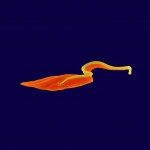Lien vers Pubmed [PMID] – 9497035
Mol. Biochem. Parasitol. 1997 Dec;90(1):95-109
We demonstrate a functional role for the paraflagellar rod (PFR) in motility of Leishmania mexicana. The PFR is a complex cytoskeletal structure running parallel to the axoneme in the flagella of kinetoplastid protozoa. The PFR is composed of a latticework of protein filaments whose major constituents are two related proteins (PFR-1 and PFR-2 in Leishmania). The molecular details of their assembly into PFR filaments are unknown as is the biological function of the PFR. As an approach to understanding the structure and function of the PFR in Leishmania, we made L. mexicana null mutants of PFR-2. PFR-2 minus parasites grow and divide normally in culture and still express the PFR-1 protein. They lack most of the PFR structure demonstrating that the PFR-2 protein is an essential constituent of the PFR. Detailed ultrastructural analysis of the PFR-2 null mutant reveals the presence of a residual inner substructure of the PFR which contains PFR-1 protein, indicating that PFR-1 can polymerize in the absence of PFR-2. The PFR-2 null mutant displays pronounced changes in flagellar beat waveform and forward swimming velocity, compared to wild type parasites consistent with decreased internal elastic bending resistance in PFR-lacking flagella, and indicating a functional role for the PFR in the motility of Leishmania.

